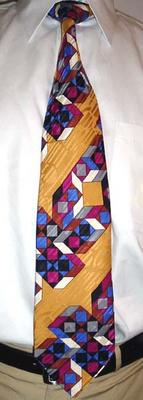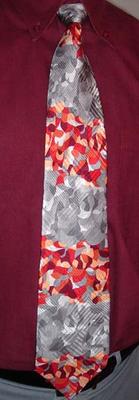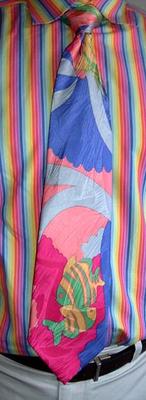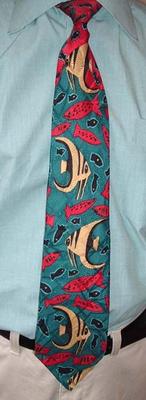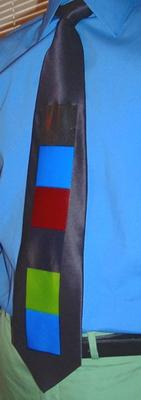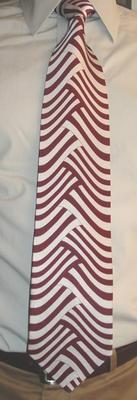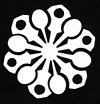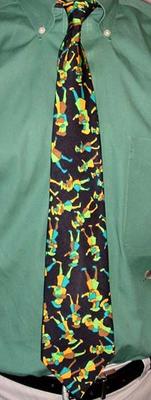
I wore this tie covered with brightly-dressed Renaissance dudes (and I do mean dudes, check out those get-ups!) in honor of the Maryland Renaissance Festival, which is going on right now in Crownsville, Maryland. There is decidedly more medievaling (ale-quaffing, turkey-leg-chewing, jousting, axe-throwing) than Renaissancing (lute- and harpsichord-playing, sonnet-writing, gourmet dining, science dabbling) at the Festival, but since all those pastimes were contemporaneous for a few hundred years while the Renaissance worked its way north from Italy, there's no problem. Some of the family's favorite acts at the fest are "Magic Kind of Guy" Mike Rose's Magic & Wit & Stuff; mime Mimi Flambe and her young assistant Max; Renaissance dance band Wolgemut; juggler/acrobat Michael Rosman, "The Squire of the Wire"; and several other acts listed on this page.
The tie is a vintage number from Giofer of Rome; I have another tie with the same pattern in an even more daring color scheme!


